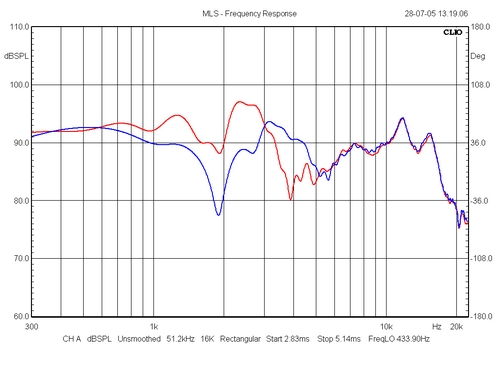sealy
Addicted Member
A friend has a pair of both models, so the other night, we decided to do a side-by-side comparison. We tried different combinations of amps, pre-amps and cd players, as well as various genres of music. We listened to both for a good half-hour, making sure that positioning of each pair was precisely the same, vis-a-vis the listening position and room placement. We were surprised by the results.
Bass response(a strength of both models) was about equal, with a very pleasant warmth that made for easy listening. Treble response was approximately equal, although we both agreed the treble was a bit more aggressive on the L36, this despite our efforts to tame it with the attenuator. The deciding factor was the mid range. For whatever reason, the mid performance of the L26 was much smoother and easier on the ears. The mids of the L36 have a "shouty" in-your-face quality that is hard to take. Again, much tinkering with the mid attenuator could not fully resolve the problem. We were in agreement that the mid driver in the L36 is the weak link. I wish that we were able to map the response characteristics of the L36 in order to validate our perceptions.
The L26 was the winner, in our opinion, with a more cohesive sound that was easier to listen to for the long-term.
As an interesting aside, we experimented with replacing the existing LE-25 tweeters in the L26s with some tweeters from the AR 93. The results were fascinating. With the AR 93 tweeters installed, clarity improved noticeably. The AR tweeters also proved a very good match in terms of efficiency.
I'd be glad to hear any comments or observations.
Bass response(a strength of both models) was about equal, with a very pleasant warmth that made for easy listening. Treble response was approximately equal, although we both agreed the treble was a bit more aggressive on the L36, this despite our efforts to tame it with the attenuator. The deciding factor was the mid range. For whatever reason, the mid performance of the L26 was much smoother and easier on the ears. The mids of the L36 have a "shouty" in-your-face quality that is hard to take. Again, much tinkering with the mid attenuator could not fully resolve the problem. We were in agreement that the mid driver in the L36 is the weak link. I wish that we were able to map the response characteristics of the L36 in order to validate our perceptions.
The L26 was the winner, in our opinion, with a more cohesive sound that was easier to listen to for the long-term.
As an interesting aside, we experimented with replacing the existing LE-25 tweeters in the L26s with some tweeters from the AR 93. The results were fascinating. With the AR 93 tweeters installed, clarity improved noticeably. The AR tweeters also proved a very good match in terms of efficiency.
I'd be glad to hear any comments or observations.


